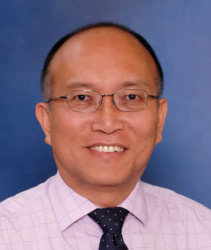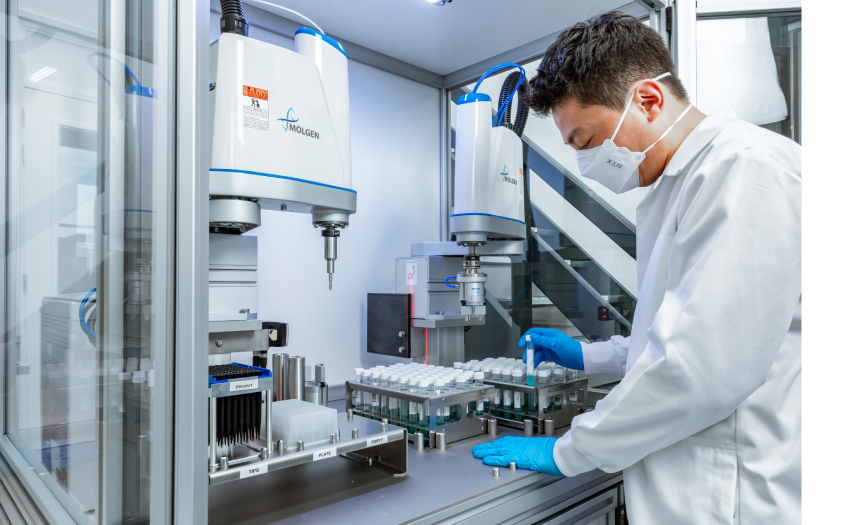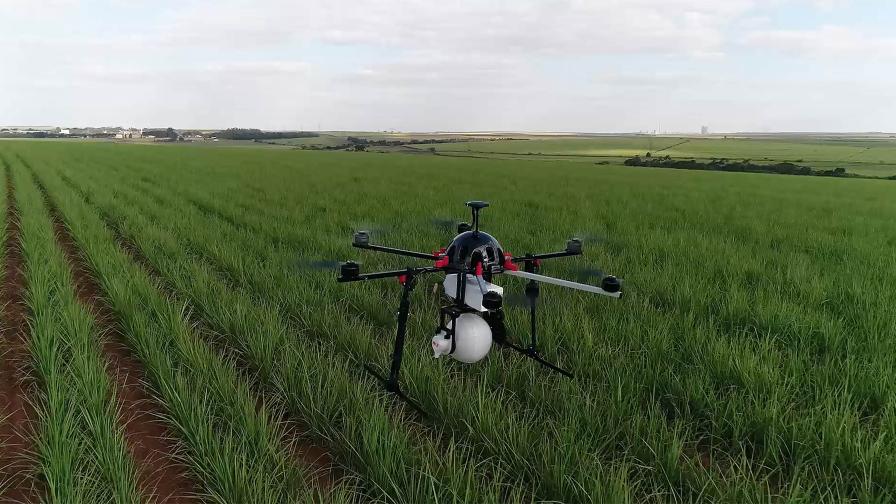Q&A with C S Liew: Global Perspective, with an Eye on Efficiency, Quality

Editor’s note: This interview is the first in a series spotlighting dynamic players in the crop input value chain. Farm Chemicals International welcomes your ideas and suggestions for future interview subjects. Please email [email protected].
FCI: How did you get started in the agchem business, and what role does your company, Pacific Agriscience, play in the market?
C S Liew: I have been in agchem since I was a student at Iowa State University. I was a summer intern at American Cyanamid (now part of BASF) helping their field researchers carry out R&D for new molecules. Upon graduation in 1979, I started working for Ciba-Geigy (now a part of Syngenta) and from there, I moved on to Uniroyal (now called Chemtura) and then Nufarm. For the past 13 years, I have been operating my own agchem company, Pacific Agriscience, headquartered in Singapore.
The agchem industry has changed and consolidated tremendously over the past 33 years that I have been involved in it. Having a global perspective and experience, I have seen and been through all these exciting changes and challenges. Knowing so many people in this industry worldwide has given me a great sense of satisfaction in terms of interacting and working with them. It is this global networking and being able to do business with them that has kept me and my company going for the past many years. The FCI Summits and publications have certainly facilitated such global networking.
Aside from sourcing and supplying generic agchem products for clients around the world, we have also developed a strong list of specialty agchem products that we market under our own PACIFIC brand. These include specialty adjuvants, foliar fertilizers, biostimulants, biofertilizers and some outstanding and novel formulation technologies that we wish to market and collaborate with generic molecule manufacturers as well as national distributors wishing to differentiate their product offerings.
FCI: How do you see your business prospects in 2013? What about Indonesia and ASEAN countries as a whole?
Liew: From the standpoint of generics, 2013 will be more challenging than ever. The generic market sector has been over-serviced for the past several years and will continue to be so for the years to come. In the case of China, the largest producer of generics, the government is making moves to tighten pollution control and shut down some plants. But more new plants, production capacities and producers are coming into the market. These new plants do have better technologies and better facilities to treat wastes.
With the market being over-serviced, competition is intense and margins are thin. In light of this trend, we have to develop new formulations to differentiate ourselves and this effort will be intensified in 2013. On the specialty agchem front, we will also put in extra efforts to market these products on a worldwide basis. The Indonesian and ASEAN market as a whole will continue to grow, but margins for generics will continue to be thin. New registration rules coming into being will also mean that more resources and efforts need to be devoted to meeting the new requirements. Ongoing efforts to harmonize the registration requirements within ASEAN will hopefully come into fruition soon as this can help reduce workload and investments in product registrations.
FCI: Can you tell me about product opportunities you see for agrochemicals in ASEAN? What specific challenges do you foresee in the coming years for your business?
Liew: Because the major crops in ASEAN are rice, oil palm and rubber, herbicides and insecticides will continue to dominate. But there will also be increasing demand for fungicides as more horticultural crops are grown to cater to the more affluent population. Any new insecticides or insecticide combinations and formulations that will solve specific pest problems such as cocoa pod borer and diamondback moth will have tremendous opportunities.
Going forward, there is no doubt that more Indian and Chinese manufacturers will be looking to enter these markets more directly. They will go down the supply chain to gain more control over their destiny and capture more value for their products. There will be opportunities to collaborate with them on several fronts including joint ventures and co-development of novel formulations.
FCI: You implemented an interesting business model in the late 1990s, called Factory to Farm.
Liew: When we started our company back in December 1998, one of our mission statements was: “A desire to create and to bring agricultural technologies and inputs to the farming community in the most efficient manner.” Eleven years later, through our F2F (Factory to Farm) business model in Australia, we are indeed putting into action what we set out to do right from inception. This is not to say we did not fulfill this mission statement during the first 10 years of operation but through F2F, but we are fulfilling it much more directly.
With the F2F model in Australia, we have interacted with farmers directly over the past two years and have learned first-hand some of the key demands – from input standpoints – of modern and large-scale farming under rather difficult and unpredictable climatic conditions. We have also learned first-hand many of the cultural practices there as well as how farmers think and click. This puts us in a good position to collaborate with any agchem manufacturer wanting to go more directly into the Australian agchem market that is worth $2 billion.
FCI: Do you see it being applied successfully elsewhere?
Liew: In my opinion, the F2F business model is only possible in country-markets that have: 1) large farming operations which means each farm’s demand for inputs could run into hundreds of thousands of dollars to well over a million dollars annually, 2) low barriers to entry in terms of product registrations that allow a large number of products to be registered with minimal investments, and 3) farmers are ready to cut input costs by buying more directly from levels higher up the supply chain. The Australian market meets all three of these factors. The Brazilian market is a close second, but registration costs per product are quite a bit higher.
The Canadian market is somewhat similar in terms of having these three factors, and the U.S. market would have been ideal for the F2F model except for the data-compensation barrier that makes it financially prohibitive to register a range a generics necessary for F2F to work. The large rubber and oil palm plantation segments of the Malaysian and Indonesian markets are also ripe for F2F.
FCI: In your presentation at the Agrochemex Conference in Shanghai last fall, you discussed issues faced by Chinese agchem suppliers. How would you go about solving some of those problems, such as distrust of Chinese-made formulations and brands at the lower levels of the supply chain?
Liew: The issues faced by Chinese agchem manufacturers going downstream in overseas markets with their own branded products – in other words, using their own product registrations – are indeed serious but not insurmountable. The one single major issue is indeed a distrust of Chinese-made formulations at the farm level.
In order for Chinese manufacturers to be successful in launching their own branded products into the overseas markets, they need to demonstrate over time that they can produce and deliver consistently good formulations. They need to band together as an association to promote their cause via local farm journals and public relations. They need to give assurance that their formulations are backed by product liability insurance and that they guarantee their products meet specifications. In short, they need to brand, to publicize and to guarantee. Most of all, they need to learn and to put into practice the product stewardship of multinational manufacturers.
Their government should also be roped in to mete out significant punishments for those out there who cheat overseas customers.
In the short term, they will need to enter and tackle the lower levels down the supply chain via collaboration with local distributors with market access – in other words, those distributors with their own registrations and brands that are already well-accepted by farmers.
FCI: What are you noticing more now about distribution companies in the Asia-Pacific region when considering an investment?
Liew:Agchem distribution companies all over the world, not only in the Asia-Pacific region, need to face the changing business landscape…fewer new molecules coming on stream, ever-increasing dominance of generics, ongoing margin erosions, multinational suppliers looking after their own interest first and foremost and most of all, the arrival of Chinese and Indian suppliers of generics at lower levels of the supply chain. They need to chart their own destiny by having more of their house brands of generics out in the market, and hence, invest in product registrations themselves. Some of them are proactive and have taken this changing business landscape on board. Many more are sticking their heads in the sand at their own peril.
Distributors who are proactive are definitely attracting the right attention of the emerging Chinese and Indian agchem manufacturers when they are considering making a direct investment and approach into the lower levels of the supply chain. They make themselves a perfect match for emerging suitors who are ready to make an investment overseas and seeking out acquisition targets or collaborators.
FCI: Any newer generic crop protection products you are excited about on the market?
Liew: Newer generics may be “exciting” in terms of margins but their inventors are working doubly hard to protect their turf as their molecules go off-patent. More and more of them are using tactics beyond the traditional suit of measures which usually include co-formulating a new generic with a patented molecule, invoking manufacturing process patents and employing marketing alliances. Not all newer generics lend themselves to this suit of possible measures and hence some have simply gone for use patents which may not stand up to challenge. But because it costs a considerable amount of money to mount such a challenge, many get away with that.
So, though there are some molecules coming off-patent soon or have just come off-patent recently, unless one has the resources to challenge the multinational manufacturers, they remain as good as patented. This is a reality that generic manufacturers and marketers have to face. Merely having an ability to synthesize these molecules coming off-patent is no longer a sure pathway to making money.
FCI: And what formulations on the horizon do you think are well-positioned to set agchem players apart in an over-serviced market?
Liew: Co-formulations of active ingredients that demonstrate some degree of synergy, novel formulations that replace ECs [emulsifable concentrates] that are being phased out in many markets as well as any formulations that use lower-cost adjuvants and incipient without losing efficacy will win in the over-serviced markets. Nanotechnology may also emerge in the near future and its acceptance will be accelerated if registration authorities could come up with a set of acceptable criteria for registration.
FCI: Thank you, Mr. Liew. Are there future business developments you would like to share?
Liew: As you can see, we are an agchem company with considerable experience, market knowledge and networking on a worldwide basis. We see ourselves as a good partner and collaborator for specialty and generic agchem manufacturers as well as any formulation technology-oriented companies.
We want potential collaborators to take note that we are not cash-rich for making significant financial investments but we are indeed knowledge and experience-rich. We are ready to collaborate with those companies with the right resources that complement what we have to offer.






